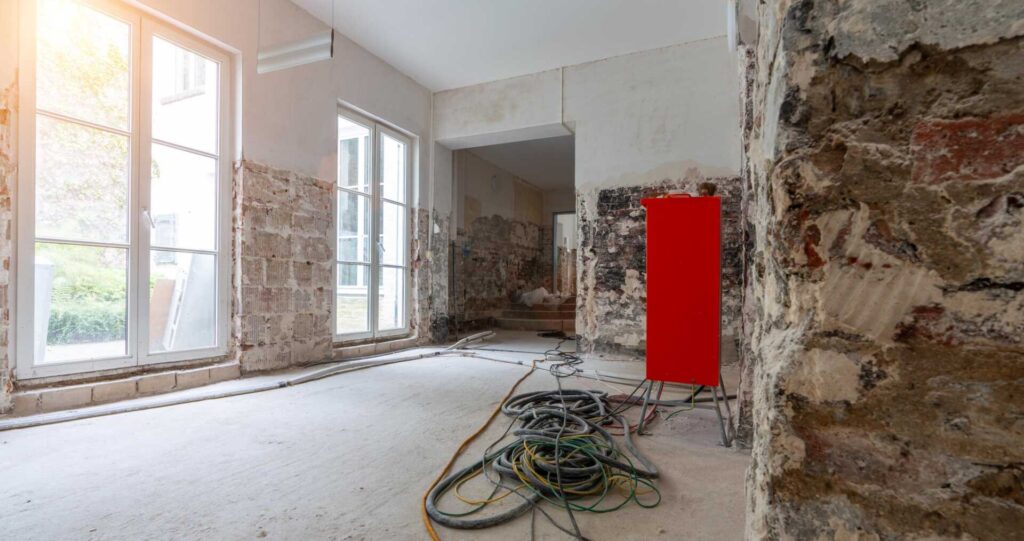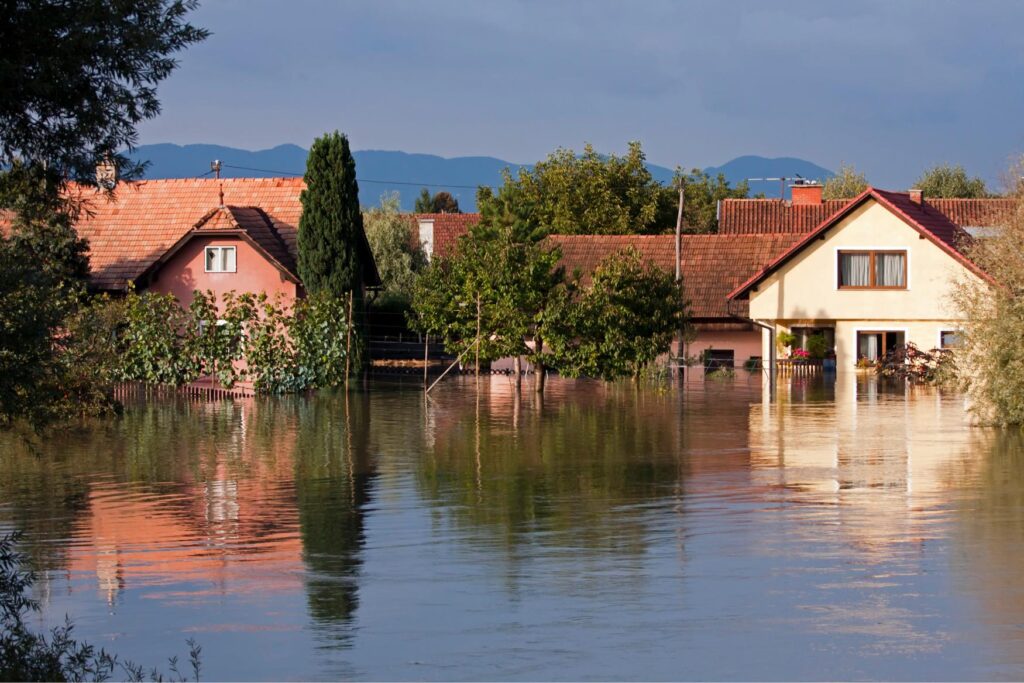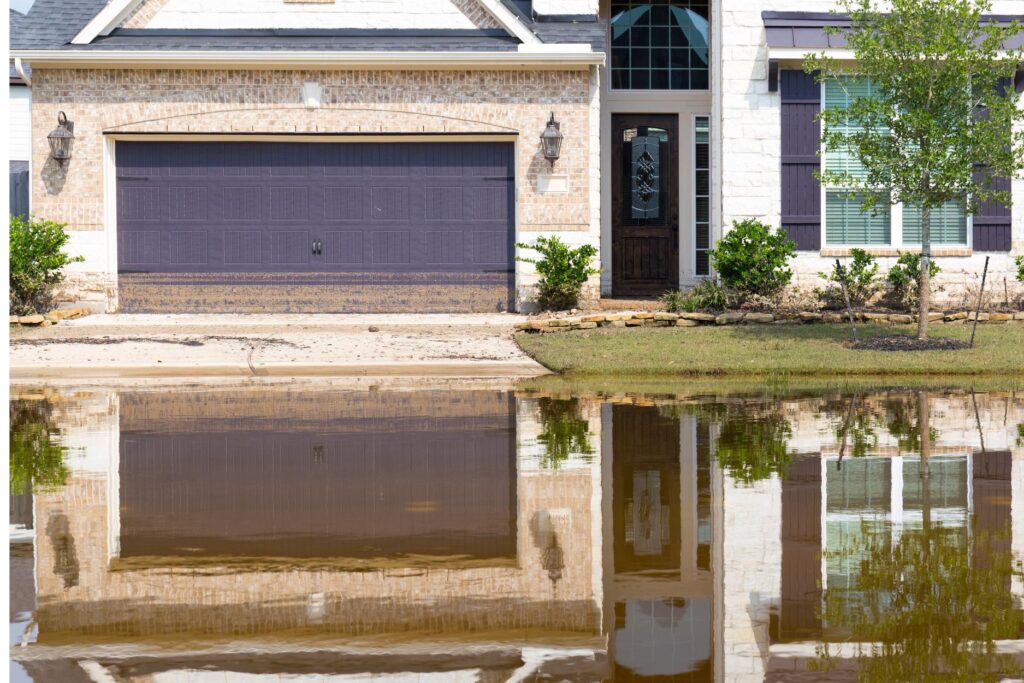Contents
When water infiltrates your home’s foundation, the consequences can be grave. From insidious cracks silently compromising the structure to the insidious growth of mold thriving in damp corners, the impact is far-reaching. But that’s just the beginning. The weakened support, settling, and shifting caused by water damage can lead to a cascade of issues, some of which may surprise you. Stay tuned to discover the full extent of how water damage can affect the very foundation of your home.
Key Takeaways
- Water damage causes foundation cracks, compromising structural integrity.
- Excess water leads to soil erosion, weakening the foundation.
- Settlement and shifting occur due to water damage, affecting foundation support.
- Mold and mildew thrive in damp environments from water damage.
- Continuous water exposure risks compromised structural integrity, necessitating timely repairs.
Cracks in Foundation
Water damage can lead to the formation of cracks in a home’s foundation, compromising its structural integrity. When excess water infiltrates the soil around your home, it exerts pressure on the foundation walls. This hydrostatic pressure can cause the concrete to crack, leading to potential structural issues. These cracks not only weaken the foundation but also allow more water to seep in, exacerbating the problem.
To maintain the structural stability of your home, prompt foundation repairs are crucial. Addressing foundation cracks early on is vital to prevent further damage. Professional contractors can assess the extent of the cracks and recommend the most suitable repair methods. Common solutions include epoxy injections, hydraulic cement, or even underpinning in severe cases.
Ignoring foundation issues can have dire consequences. Cracks in the foundation can compromise the overall structural stability of your home. This instability can manifest in sloping floors, sticking doors, or even visible gaps between walls and ceilings.
Soil Erosion
Excessive moisture around your home can result in soil erosion, posing a threat to the stability of the foundation. Soil erosion occurs when water washes away the topsoil, weakening the ground that supports your home. This can lead to a decrease in soil stability, causing shifts in the foundation and potential structural damage.
Proper water drainage is essential to prevent soil erosion and maintain foundation stability.
Effective erosion prevention measures include grading the soil away from the foundation, installing gutters and downspouts to direct water away from the house, and ensuring that the soil around your home is adequately compacted. Proper grading ensures that water flows away from the foundation instead of pooling around it, reducing the risk of erosion.
Gutters and downspouts collect rainwater from the roof and direct it away from the house, preventing excess water from saturating the soil near the foundation. Furthermore, compacted soil can resist erosion better than loose soil. Compaction increases the soil’s density, making it less susceptible to water-induced erosion.
Settling and Shifting
Foundation settling and shifting can occur due to changes in soil conditions caused by water damage, potentially leading to structural issues in your home. When water accumulates around your foundation, it can affect the soil underneath, causing it to expand or contract unevenly. This imbalance in the soil can result in the foundation settling or shifting over time.
Here are some key points to consider regarding settling and shifting:
Soil Compaction: Excessive water can lead to soil compaction, where the soil becomes densely packed. This compaction reduces soil porosity, affecting its ability to support the foundation adequately.
Uneven Settlement: Water damage can create variations in soil moisture levels, leading to differential settlement. This non-uniform settling can cause your foundation to sink or tilt in different areas.
Structural Damage: As the foundation settles or shifts, it can put pressure on the structure above, leading to cracks in walls, floors, or ceilings.
Drainage Solutions: Implementing proper drainage solutions, such as installing downspouts, grading the soil away from the foundation, or adding French drains, can help mitigate the effects of water damage on soil and prevent foundation issues.
Understanding the impact of water damage on soil conditions and taking proactive measures to address drainage can help maintain the stability and integrity of your home’s foundation.
Mold and Mildew Growth
How does the presence of moisture due to water damage contribute to the growth of mold and mildew in your home?
When water infiltrates your home’s foundation, it creates a damp environment that’s conducive to mold and mildew growth. Mold spores are present in the air both indoors and outdoors, and when they find a moist surface to settle on, they can quickly multiply. Proper ventilation is key to mold prevention as it helps reduce moisture levels in the air, making it harder for mold to thrive. Checking for any leaks or water damage regularly and promptly addressing them can significantly reduce the risk of mold growth in your home.
Mildew, a type of mold, can also be a common problem in damp areas of your home.
To prevent mildew, it’s essential to remove excess moisture promptly. Using dehumidifiers in areas prone to dampness can help keep mildew at bay. Additionally, ensuring proper ventilation in bathrooms, kitchens, and basements where moisture levels tend to be higher is crucial for mildew prevention.
Compromised Structural Integrity
Water damage can weaken the foundation of your home, posing a significant risk of structural collapse.
Continuous exposure to water can compromise the foundation’s integrity, leading to potential safety hazards.
It’s crucial to address water damage promptly to prevent any further deterioration of the foundation’s stability.
Foundation Weakening Due to Water
Excessive water exposure can lead to a gradual degradation of the structural integrity of a home’s foundation. When water weakens the foundation, it can jeopardize the stability of the entire structure.
Here are some key points to consider:
Poor Drainage Solutions: Inadequate drainage can result in water pooling around the foundation, increasing the risk of damage over time.
Limited Waterproofing Options: Insufficient waterproofing can make the foundation vulnerable to water infiltration, accelerating its weakening.
Lack of Soil Compaction: Improperly compacted soil beneath the foundation can shift and settle with water exposure, causing structural issues.
Delayed Foundation Repair: Neglecting foundation repairs after water damage can exacerbate existing problems, leading to further weakening.
Understanding these factors is crucial in maintaining the structural integrity of your home. By addressing drainage, waterproofing, soil compaction, and timely repairs, you can mitigate the risks associated with foundation weakening due to water exposure.
Risk of Foundation Collapse
The compromised structural integrity of a foundation poses a significant risk of collapse when exposed to prolonged water damage. Foundation stability is crucial for the overall structural health of a building. When water infiltrates the foundation, it weakens the concrete or masonry materials that support the structure. This weakening can lead to cracks, shifting, or settling of the foundation, jeopardizing the stability of the entire building.
The impact of water damage on the foundation is particularly concerning because it can compromise the load-bearing capacity of the structure, increasing the likelihood of a collapse.
If left unchecked, the consequences of a compromised foundation can be catastrophic. The risk of foundation collapse due to water damage underscores the importance of proactive maintenance and swift repairs when signs of foundation weakening are detected.
Regular inspections, proper drainage systems, and timely repairs are essential to safeguarding the structural integrity of your home. By addressing water damage promptly and ensuring the stability of the foundation, you can mitigate the risk of a potential collapse and preserve the safety of your property.
Basement Flooding
Your basement’s susceptibility to flooding poses a significant threat to your home’s foundation. Understanding the risks associated with basement floods is crucial in safeguarding your property against water damage.
Implementing effective strategies to prevent basement water damage is essential for maintaining the structural integrity of your home.
Basement Vulnerability to Flooding
Basement flooding poses a significant risk to the structural integrity of your home’s foundation. To protect your basement from potential flood damage, consider implementing the following measures:
Drainage Solutions: Proper grading around your home can help direct water away from the foundation, reducing the risk of basement flooding.
Waterproofing Methods: Applying waterproof sealants or membranes to the exterior walls of your basement can prevent water from seeping through and causing damage.
Sump Pump Installation: Installing a sump pump in your basement can help remove any excess water before it has a chance to cause flooding.
Moisture Barriers: Utilizing moisture barriers on basement walls and floors can help prevent water vapor from seeping into the basement, reducing the likelihood of flooding.
Risks of Basement Floods
Why do basement floods pose a critical threat to the foundation of a home? Basement floods can significantly compromise the structural integrity of your home by weakening the foundation and causing mold growth, which can lead to health issues. To mitigate these risks, implementing effective drainage solutions and waterproofing methods is crucial.
| Risks of Basement Floods | Mitigation Strategies |
|---|---|
| Weakening foundation | Implement proper drainage solutions to redirect water away from the foundation. |
| Mold growth | Utilize waterproofing methods such as sealants and membranes to prevent water intrusion. |
| Health hazards | Ensure prompt emergency response to remove standing water and address moisture issues. |
| Property damage | Consider insurance coverage to protect against the financial impacts of basement floods. |
Understanding the risks associated with basement floods and taking proactive steps like improving drainage, waterproofing, emergency response, and insurance coverage can help safeguard your home’s foundation and ensure a healthier living environment for you and your family.
Preventing Basement Water Damage
Basement water damage, particularly from flooding, can be effectively prevented through strategic measures that address drainage and waterproofing concerns. To safeguard your basement from water damage, consider the following tips:
Implement proper drainage solutions: Ensure that your property has adequate drainage systems in place to divert water away from the foundation. Options include French drains, sump pumps, and gutters.
Invest in waterproofing methods: Apply waterproof sealants to basement walls and floors to create a barrier against moisture infiltration. Consider installing a waterproof membrane or using waterproof paints.
Opt for landscaping tips: Grade the soil around your home away from the foundation to prevent water from pooling near the basement walls. Planting vegetation with deep roots can also help absorb excess moisture.
Maintain gutter systems: Regularly clean and inspect your gutters to prevent clogs and ensure proper water flow. Consider installing gutter guards to prevent debris buildup.
Weakened Support Beams
When water damage infiltrates your home’s foundation, the support beams can gradually weaken, compromising the structural integrity of the entire building. The support beams play a crucial role in distributing the weight of the structure evenly and maintaining its stability.
Water damage can lead to the deterioration of these beams, impacting the overall strength of the foundation.
One key aspect affected by weakened support beams is beam reinforcement. Beam reinforcement is essential for ensuring that the support beams can withstand the load placed upon them. When water damage weakens these beams, the reinforcement becomes less effective, increasing the risk of structural issues.
Moreover, foundation stability is significantly impacted when support beams are weakened due to water damage. A stable foundation relies on the strength of the support beams to bear the weight of the building. As these beams weaken, the foundation becomes less stable, potentially leading to uneven settling, cracks in the walls, or even structural failure.
To prevent the detrimental effects of weakened support beams, it’s crucial to address any water damage promptly and reinforce the beams as necessary.
Regular inspections and maintenance can help identify early signs of water damage and ensure the structural integrity of your home’s foundation remains intact.
Increased Risk of Collapses
Water damage weakening support beams in a home’s foundation can result in an increased risk of collapses within the structure. When the support beams are compromised, the structural stability of the entire building is jeopardized, leading to potential safety hazards for the inhabitants. Here are some key points to consider regarding the increased risk of collapses due to water damage:
Foundation Integrity: Water damage weakens the foundation, making it more susceptible to shifting and settling, which can eventually lead to structural failure.
Support Beam Deterioration: The deterioration of support beams compromises the load-bearing capacity of the structure, increasing the likelihood of collapses.
Cracks and Fractures: Water damage can cause cracks and fractures in the foundation, further weakening its ability to support the weight of the building.
Accelerated Decay: Moist conditions resulting from water damage can accelerate the decay of wood and other materials used in the construction of the support beams, hastening the risk of collapses.
Maintaining building safety is paramount to ensuring the well-being of those who reside within the structure. By addressing water damage promptly and implementing necessary repairs to restore structural integrity, the risk of collapses can be mitigated, safeguarding the occupants and preserving the longevity of the building.
Costly Repairs
Addressing water damage in a timely manner can help prevent costly repairs to a home’s foundation. When water infiltrates the foundation of your home, it can lead to serious structural issues that require immediate attention. Repair costs for foundation damage can vary significantly depending on the extent of the damage and the specific repairs needed. In general, foundation repairs can range from a few thousand dollars to tens of thousands of dollars, making them a significant financial burden for homeowners.
Insurance coverage for foundation repairs due to water damage can also be a complex issue. While standard homeowner’s insurance policies typically cover sudden and accidental water damage, they may not cover gradual damage that occurs over time. It’s essential to review your insurance policy carefully to understand what’s and isn’t covered in terms of foundation repairs.
Maintaining foundation stability is crucial to prevent costly repairs caused by water damage. Regular inspections, proper drainage systems, and timely repairs to any water leaks or seepage can help protect your home’s foundation from water-related issues. Investing in preventative methods can save you money in the long run by avoiding extensive foundation repairs.
Wrap-Up
Water damage can wreak havoc on a home’s foundation, leading to cracks, soil erosion, settling, and mold growth. The impact isn’t just structural but also financial, with costly repairs and health hazards to consider.
Ignoring these issues is like inviting a wrecking ball to demolish your home. Take proactive measures to address water damage and protect your home’s foundation before it’s too late.




